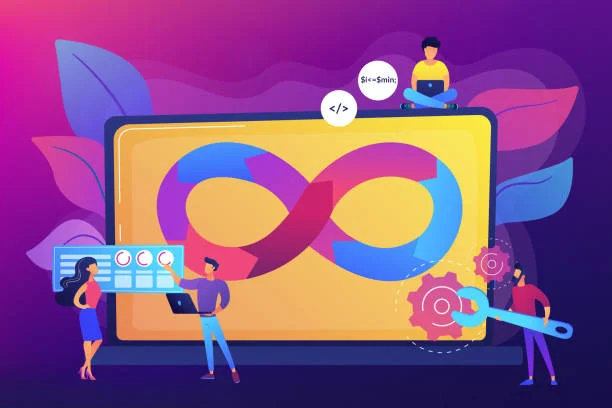Digital transformation is no longer just a buzzword; it has become a strategic priority for organizations across industries. As companies look to deliver faster, adapt to market changes, and enhance customer experiences, two approaches stand out: Agile and DevOps. While each has its own methodology and culture, together they create a powerful framework that drives speed, collaboration, and innovation.
What Is Agile?
Agile is a methodology that emphasizes iterative development, customer feedback, and cross-functional collaboration. Instead of long development cycles, Agile promotes short sprints where teams deliver working features quickly. This approach reduces delays, helps incorporate feedback promptly, and ensures that the final product aligns closely with user needs.
What Is DevOps?
DevOps extends Agile practices into operations by bridging the gap between development and IT teams. It combines practices, automation, and culture to enable continuous integration, continuous delivery (CI/CD), and continuous monitoring. The focus is on accelerating software delivery while maintaining quality and stability.
Don’t miss the related post that expands your view with fresh knowledge inside.
How Agile and DevOps Work Together
Agile accelerates product development by fostering adaptability and customer-driven priorities. DevOps ensures that the developed product is deployed, tested, and maintained smoothly. Together, they create a loop where development and operations reinforce each other:
- Agile defines what needs to be built.
- DevOps ensures how it is delivered and managed efficiently.
Culture and Collaboration
At the heart of both approaches lies a cultural shift. Teams need to move away from siloed operations and embrace shared responsibility. Agile thrives on cross-functional teamwork, while DevOps encourages developers, testers, and operations teams to work as a single unit. This cultural alignment reduces bottlenecks and enhances productivity.
Key Practices That Drive Transformation
- Automation: Automating testing, deployment, and infrastructure reduces manual errors and speeds up delivery.
- Continuous Integration and Delivery (CI/CD): Small, frequent updates are easier to test and release, reducing risks compared to large deployments.
- Monitoring and Feedback: Real-time monitoring ensures teams can act quickly when issues arise. Feedback loops help refine processes and improve user satisfaction.
- Infrastructure as Code: Managing infrastructure through code allows for consistency, scalability, and faster provisioning.
Aligning with Business Goals
Agile and DevOps are not just technical frameworks; they are strategies that tie directly to business objectives. Faster time-to-market, improved product quality, and enhanced customer experiences directly impact revenue and competitiveness. By aligning development and operations with business KPIs, organizations ensure that technology efforts contribute measurable value.
Overcoming Challenges
Implementing Agile and DevOps comes with challenges. Common issues include:
- Resistance to Change: Teams accustomed to traditional methods may hesitate to adapt.
- Tool Overload: Organizations sometimes focus too much on tools instead of processes and culture.
- Scaling: Extending Agile and DevOps practices across large, distributed teams requires thoughtful planning.
Addressing these challenges requires leadership commitment, clear communication, and continuous training.
The Role of Security: DevSecOps
As applications become more complex, integrating security early in the lifecycle is critical. DevSecOps extends DevOps by embedding security practices into every stage of development and operations. Automated security checks, vulnerability scanning, and compliance monitoring ensure that speed does not compromise safety.
Measuring Success
Metrics play a vital role in assessing progress. Useful measurements include:
- Deployment frequency
- Lead time for changes
- Mean time to recovery (MTTR)
- Customer satisfaction scores
Tracking these indicators allows organizations to identify strengths, address weaknesses, and demonstrate business value.
Real-World Impact
Many leading companies have demonstrated the effectiveness of combining Agile and DevOps. For example, large retailers use these practices to update e-commerce platforms daily, while financial firms deploy new digital services quickly without disrupting customer transactions. These examples highlight the tangible impact of speed, collaboration, and continuous improvement.
Looking Ahead
The future of Agile and DevOps will likely integrate advanced technologies such as artificial intelligence, machine learning, and cloud-native architectures. These innovations will further enhance automation, predictive monitoring, and scalability, making digital transformation more sustainable and efficient.
Conclusion
Agile and DevOps together form a dynamic framework for digital transformation. Agile drives adaptability and responsiveness, while DevOps ensures reliable delivery and operations. When combined, they create a culture of collaboration, speed, and continuous improvement that directly supports business growth. Organizations that embrace both approaches are better equipped to navigate the complexities of today’s digital economy and deliver meaningful results to customers.
Take a step further—explore more insights that can transform your perspective.







